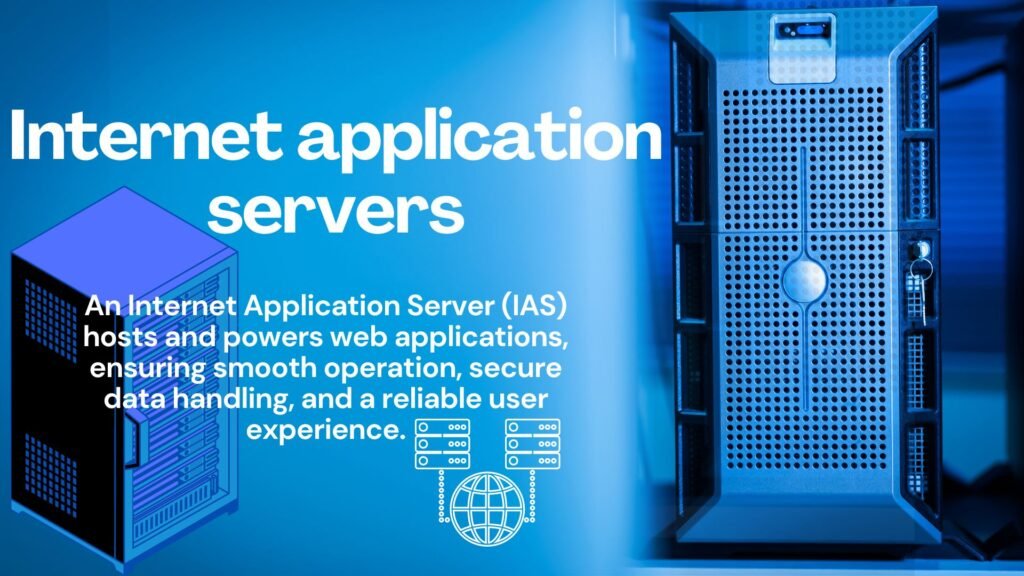Table of Contents
What Is Internet Application Server?
An Internet Application Server (IAS) is a software platform that hosts web applications and manages tasks such as processing user requests, handling data, and ensuring security. It serves as the core of web services, enabling applications to run efficiently by performing essential tasks, interacting with databases, and monitoring user sessions. Internet application servers are critical to serving dynamic content and maintaining a secure, reliable experience for users on websites and apps.

Why are Internet Application Servers Important?
Internet application servers are important because they ensure that web applications run efficiently, securely, and reliably. Whether you’re managing an online store, running a business app, or just browsing the web, these servers work in the background to give you a smooth experience.
What Does an Internet Application Server Do?
An Internet Application Server handles many of the tasks that keep a Web application running smoothly. Here is how this works:
1: Handles requests: When you visit a website or use an app, your request is sent to a server. The server processes it and sends back the information you want, like a web page or app data.
2: Runs core functions: The server performs the main functions of the app, such as processing orders in the online store or managing user accounts.
3: Works with databases: The server talks to the database to get or store the data the app needs, such as when you log in and it checks your credentials.
4: Manages user sessions: It keeps track of who you are and what you’re doing on the site, so your session (like a shopping cart) stays active while you browse.
5: Keeps data safe: The server helps protect your data by managing authentication (verifying who you are) and authorization (making sure you’re allowed to act).
6: Shares the workload: If many people are using the app at the same time, the server spreads the work across multiple servers to make everything run smoothly.
7: Logs Errors: The server records any errors that help prevent them from affecting your experience.
Main components of Internet Application Server
Here are the major parts of an Internet Application Server:
*Web Server: This is the part that handles incoming requests and serves static content such as images and HTML files. Examples include Apache and Nginx.
*Application server: These part references were core functions of the app, handling everything foam processing data so sanding notifications. Apache Tomcat and Oracle Webological Array Reveal Opus Ophthalus.
*Database Server: It stores and retrieves data that the app needs to function, such as user information or product details. Popular examples include MySQL and Microsoft SQL Server.
*Middleware: It connects the different parts of the app, ensuring that they work together smoothly.
*Content Delivery Network (CDN): A CDN speeds up content delivery by spreading it across multiple servers around the world, so it loads faster.
*Caching: It temporarily stores frequently accessed data so the server doesn’t have to retrieve it from the database every time, making responses faster.
Popular Internet Application Servers
1″ Apache Tomcat: A popular open-source server to run Java applications.
2″ IBM WebSphere: A stronger server often used by large companies for critical applications.
3″ Microsoft IIS (Internet Information Services): A flexible server for hosting Web apps on Windows servers.
4″ Node.js: An environment that lets you run JavaScript code on the server side, ideal for building fast, scalable network apps.
How does an Internet Application Server work?
1; Handling requests: When you visit a website or use a web application, your web browser sends a request to the server hosting the site or app. The Internet application server receives this request and determines what information or action you are looking for.
2; Processing the request: Once the server understands your request, it processes it. This may include running a program or script, accessing a database, or interacting with other services. For example, if you’re logging in, the server will verify your username and password against its database.
3; Generating a response: After processing, the server generates a response based on your request. This response can be a web page (HTML), data in JSON format, or other types of information that the application uses. The server then sends this response to your browser.
4; Delivery of Response: Finally, your browser receives the response from the server and displays it to you. This could be the web page you want to visit, a confirmation message, or other relevant content.
This process is fast and seamless, allowing you to easily interact with websites and web applications.
In today’s digital world, Internet Application Servers are the backbone of web applications. They handle everything from processing requests to managing data, ensuring that the websites and apps you use are always available and performing well. Whether you are a developer or business owner, understanding how these servers work can help you make better decisions about your web setup.


